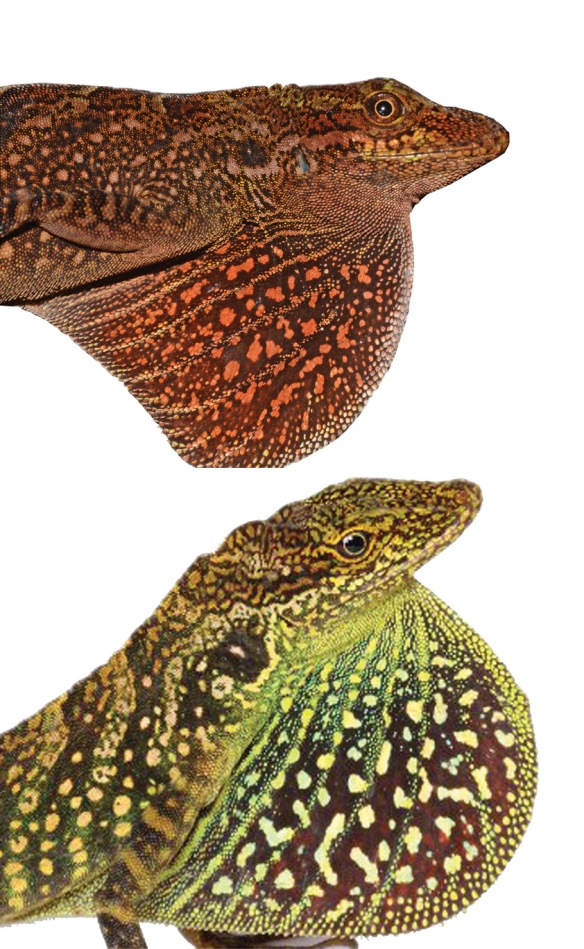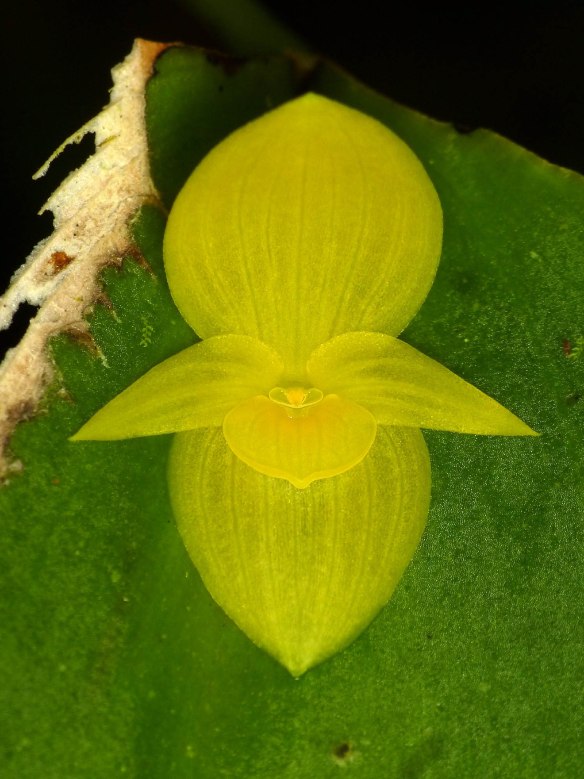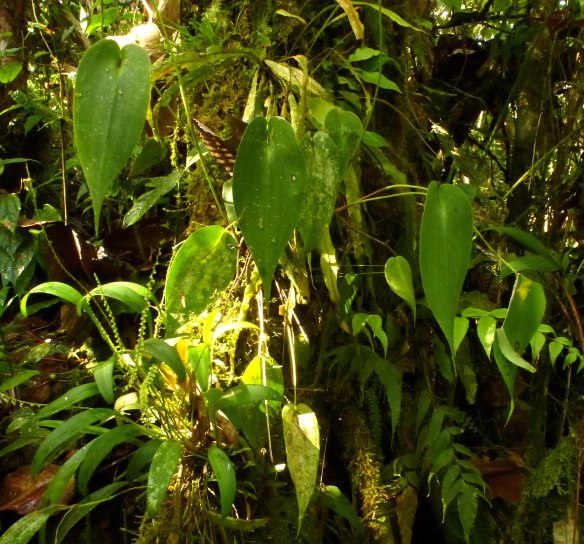
The shrew-opossum Caenolestes sangay, not exactly cute and cuddly! Photo: Jorge Brito.
Most mammals, including us, are placental mammals. There are two smaller groups of mammals: egg-laying monotremes like the platypus, and marsupials like the opossum and kangaroo. These groups diverged more than a hundred million years ago from the lineage that became the placental mammals, and though they are minor players in the world today, both were more important in the distant past. Marsupials in particular were once much more important and much more diverse. Marsupials apparently originated in the northern continent that became Asia and North America. About 65Mya marsupials moved from North America into South America, which at this time was also connected to Antarctica and Australia. Around 50-35Mya, at least one species of marsupial made it to what is now Australia via Antarctica, setting the stage for the later diversification of marsupials on that continent as it moved away from Antarctica and into its splendid isolation in the remoteness of the Pacific Ocean.

South American saber-toothed marsupial carnivore Thylacosmilus. Photo: Wikipedia CC.
Fossil evidence shows that ancient South America of 10-40Mya had a rich and ecologically diverse marsupial fauna. Some of them were the size of bears, and others were large predators with two saber-like teeth like those of the famous saber-toothed cats. Some were hopping animals similar to the kangaroo rat, some resembled the present-day North American opossum, and some were arboreal animals resembling primates. There was also a rich and varied group of small and mid-sized rat-like marsupials belonging to the order Paucituberculata, which included both carnivorous and plant-eating genera.
Over time, these strange marsupials slowly disappeared. Only a few species in the order Paucituberculata, and one species (or species complex) in the order Microbiotheria (which may have been a reverse migrant from the early marsupial diversification in Australia), survive today.
Our reserves protect two of these survivors, the “shrew-opossums” Caenolestes convelatus in our Dracula Reserve and Caenolestes sangay in our Cerro Candelaria Reserve (see Technical Note 1 below). Both shrew-opossums are in the order Paucituberculata and both are mainly predators, feeding on insects, other arthropods, worms, frogs, and small mammals, but they also sometimes eat fruit and fungi. They have two distinctive lower incisors that point straight ahead, like daggers. Caenolestes sangay is a new species described in 2013 by a group of scientists that included our collaborator Jorge Brito. It is exciting to add a previously unknown descendant of this lonely lineage, which diverged from other marsupials 55Mya.

Caenolestes sangay skull, note the dagger-like lower incisors. From Ojala-Barbour et al (2013) A new species of shrew-opossum (Paucituberculata: Caenolestidae) with a phylogeny of extant caenolestids, Journal of Mammology 94: 967-982.

The shrew-opossum Caenolestes sangay. Photo: Jorge Brito.

The shrew-opossum from our Dracula Reserve, Caenolestes convelatus. Photo: Jorge Brito.
In our Dracula and Cerro Candelaria reserves, the resident species of Caenolestes is the sole representative of its order, and this makes its conservation especially important. Conservationists tend to think in terms of species diversity, but we should also pay attention to higher-level diversity. All else being equal, a reserve that contained sloths, manatees, monkeys, bats, and deer would be far more important than a reserve that protected only a set of rodents, even if the number of species were the same in each of the two reserves. A reserve with one species of rat and one species of shrew-opossum is far more diverse and important than an otherwise identical reserve with two species of rat and no species of shrew-opossum. The first reserve protects more unique evolutionary history than the second. I believe this should be the guiding principle of conservation: maximize the amount of unique evolutionary history protected.

Phylogenetic tree of the major mammal groups (orders). The order Paucituberculata, which contains the shrew-opossums, is highlighted in red. Modified from https://www.palaeontologyonline.com/articles/2012/fossil-focus-marsupials/
The amount of unique evolutionary history represented in a given locality is called its “phylogenetic diversity”. In this age of DNA analysis we have reasonably accurate phylogenetic trees for many plant and animal groups. For any given natural group — mammals, for example — the simplest measure of the amount of unique evolutionary history protected at a locality is the total length of all the branches in the phylogenetic tree (including the “trunk” that connects the group to the rest of the organisms in the reserve) of the species found there (see Technical Note 2 for other ways of measuring this). In the case of our shrew-opossum, it has been evolving on its own unique branch for at least 55 million years, so it contributes quite a lot of phylogenetic diversity to our Cerro Candelaria and Dracula reserves. The shrew-opossums are among the most interesting mammals in our reserves, even though almost no one has ever heard of them.
Lou Jost, Fundacion EcoMinga
Technical notes:
- The name “Shrew-opossum” can be misleading. Strictly speakimg, the opossums are marsupials in a different order than this animal. I think a better English name for these would be “marsupial shrew”.
- My colleagues Anne Chao, CH Chiu, and I have developed some more advanced measures of phylogenetic diversity and differentiation: Chao A, Chiu CH, Jost L (2010) Phylogenetic diversity measures based on Hill numbers, Philosophical Transactions of the Royal Society B 365:3599–3609 https://www.researchgate.net/publication/47566303_Phylogenetic_diversity_measures_based_on_Hill_numbers
Zarigüeyas-musaraña, nuestros mamíferos más extraños
IMG 01 – ¡La zarigüeya-musaraña Caenolestes sangay, no exactamente tierna y mimosa *delicada*! Fotografía: Jorge Brito
La mayoría de mamíferos, incluyéndonos, son mamíferos placentarios. Hay dos grupos más pequeños de mamíferos: los monotremas pone-huevos como el ornitorrinco, y los marsupiales como las musarañas y el canguro. Estos grupos divergieron hace más de cien millones de años atrás del linaje que se volvió de los mamíferos placentarios, y aunque son jugadores menores en el mundo de hoy, ambos fueron más importantes en el pasado distante. Los marsupiales en particular fueron mucho más importantes y mucho más diversos. Aparentemente los marsupiales se originaron en el continente norte que se volvió Asia y Norteamérica. Cerca de 65 millones de años atrás los marsupiales se movieron de Norteamérica a Suramérica, lo cual en ese tiempo también se conectaba a la Antártica y Australia. Cerca de 50-35 millones de años atrás, al menos una especie de marsupial llegó a lo que ahora es Australia a través de la Antártica, preparando el terreno para una diversificación tardía de marsupiales en ese continente a medida que se alejaba de la Antártica y se adentraba en su espléndido aislamiento en la lejanía del Océano Pacífico.
IMG 02 – Carnívoro marsupial dientes de sable sudamericano Thylacosmilus. Fotografía: Wikipedia
La evidencia fósil muestra que la antigua Suramérica de hace 10 a 40 millones de años tenía una fauna marsupial rica y ecológicamente diversa. Algunas de ellas tenían el tamaño de osos, y otros eran grandes predadores con dos dientes en forma de sable como los de los famosos felinos dientes de sable. Algunos eran animales saltarines similares a la rata canguro, y algunos parecían a las musarañas norteamericanas de hoy en día, y algunos eran animales arbóreos parecidos a primates. También había un grupo rico y variado de marsupiales similares a ratas de tamaño pequeño y mediano pertenecientes al orden Paucituberculata, el cual incluye géneros carnívoros y herbívoros.
A lo largo del tiempo, estos marsupiales extraños desaparecieron lentamente. Sólo unas pocas especies en el orden Paucituberculata, y una especie (o complejo de especies) en el orden Microbiotheria (el cual puede haber sido un migrante inverso de la diversificación marsupial temprana en Australia), sobrevive hoy.
Nuestras reservas protegen dos de estos sobrevivientes, las “musarañas-zarigüeyas” Caenolestes convelatus en nuestra Reserva Drácula y Caenolestes sangay en nuestra Reserva Cerro Candelaria (ver la Nota Técnica 1 a continuación). Ambas zarigüeyas-musarañas están en el orden Paucituberculata y ambos son principalmente depredadoras, alimentándose de insectos, otros artrópodos, gusanos, ranas, y pequeños mamíferos, pero ellos también a veces comen frutas y hongos. Ellos tienen dos incisivos inferiores distintivos que apuntan hacia adelante, como dagas. Caenolestes sangay es una nueva especie descrita en 2013 por un grupo de científicos que incluyen a nuestro colaborador Jorge Brito. Es emocionante añadir un descendiente previamente desconocido a este linaje solitario, el cual divergió de otros marsupiales hace 55 millones de años.
IMG 03 – Cráneo de Caenolestes sangay, observe los incisivos inferiores en forma de daga. De Ojala-Barbour et al. (2013) Una nueva especie de zarigüeya-musaraña (Paucituberculata: Caenolestidae) con una filogenia de caenolestidos existentes, Journal of Mammology 94:967-982
IMG 04 – La zarigüeya-musaraña Caenolestes sangay. Fotografía: Jorge Brito
IMG 05 – La zarigüeya-musaraña de nuestra Reserva Drácula, Caenolestes convelatus. Fotografía: Jorge Brito.
En nuestras Reservas Drácula y Cerro Candelaria, la especie residente de Caenolestes es la única representante de su orden, y esto hace que su conservación sea especialmente importante. Los conservacionistas tienden a pensar en términos de diversidad de especies pero deberíamos también poner atención a la diversidad de alto nivel. En igualdad de condiciones, una reserva que contiene perezosos, manatís, monos, murciélagos y ciervos sería mucho más importante que una reserva que protege solo a un grupo de roedores, incluso si el número de especies fuera el mismo en cada una de las dos reservas. Una reserva con una especie de rata y una especie de zarigüeya-musaraña es mucho más diversa e importante que una reserva idéntica con dos especies de rata y ninguna especie de zarigüeya-musaraña. La primera reserva protege una historia evolutiva más singular que la segunda. Creo que este debería ser el principio rector de la conservación: maximizar la cantidad de historia evolutiva única protegida.
IMG 06 – Árbol filogenético de la mayoría de los grupos de mamíferos (órdenes). El orden Paucituberculata, el cual contiene las zarigüeyas-musarañas, esta resaltado en rojo. Modificado de: https://www.palaeontologyonline.com/articles/2012/fossil-focus-marsupials/
La cantidad de historia evolutiva única representada en una localidad dada es llamada su “diversidad filogenética”. En esta era de análisis de ADN tenemos árboles filogenéticos razonablemente precisos para muchos grupos de plantas y animales. Para cualquier grupo natural dado – mamíferos, por ejemplo – la medida más simple de la cantidad de historia evolutiva única protegida en una localidad es la longitud total de todas las ramas en el árbol filogenético (incluyendo el “tronco” que conecta el grupo al resto de los organismos en la reserva) de las especies encontradas ahí (mire la Nota Técnica 2 para otras maneras de medir esto. En el caso de nuestra zarigüeya-musaraña, ha ido evolucionando por su propia rama por al menos 55 millones de años, de modo que contribuye bastante a la diversidad filogenética de nuestras reservas Cerro Candelaria y Drácula. Las zarigüeyas-musarañas están entre los mamíferos más interesantes en nuestras reservas, incluso aunque casi nadie ha oído hablar sobre ellas.
Lou Jost, Fundacion EcoMinga
Traducción: Salomé Solórzano-Flores
Notas Tecnicas:
- El nombre “zarigüeya-musaraña” puede ser engañoso. Estrictamente hablando las zarigüeyas son marsupiales en un orden diferente que este animal. Creo que un mejor nombre en inglés para esto podría ser “musaraña marsupial”
- Mis colegas Anne Chao, CH Chiu, y yo hemos desarrollado algunas medidas más avanzadas para la diferenciación y diversidad filogenética: Chao A, Chiu CH, Jost L (2010) Diversidad filogenética basada en los números de Hill, Philosophical Transactions of the Royal Society B 365:3599-3609 https://www.researchgate.net/publication/47566303_Phylogenetic_diversity_measures_based_on_Hill_numbers










 Puma photographed by our camera trap!
Puma photographed by our camera trap!